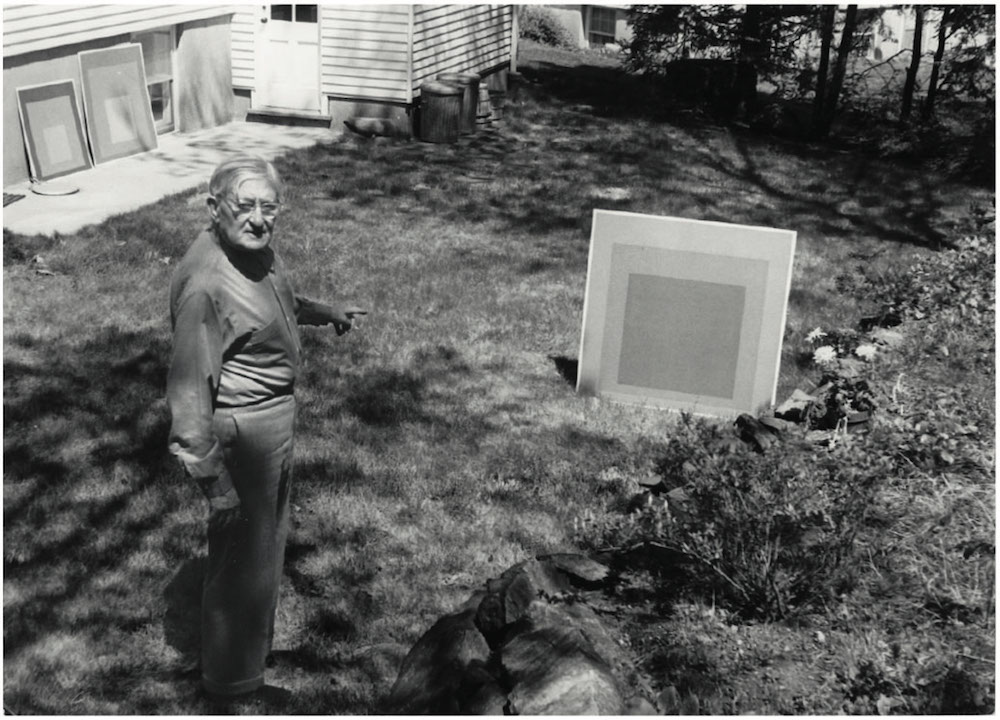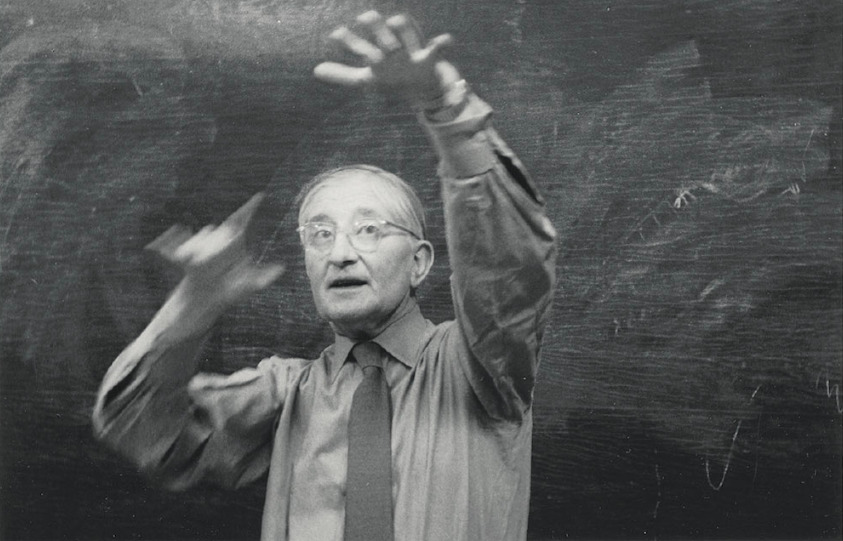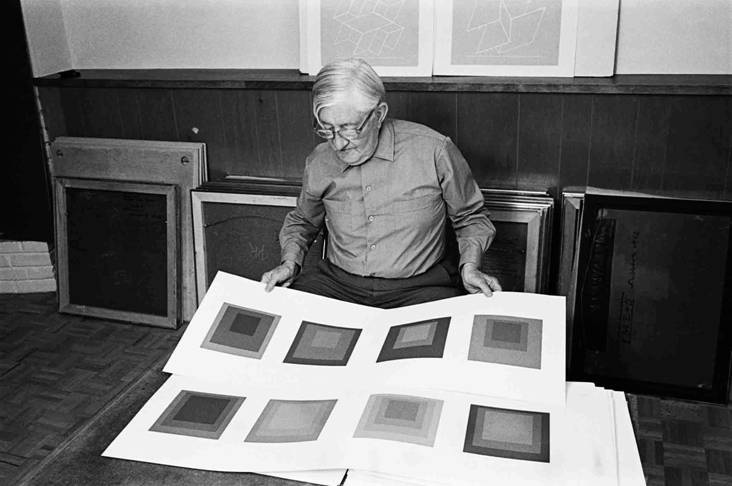Josef Albers was a pioneering artist of the 20th century, celebrated not only for his innovative approach to color theory and geometric abstraction but also for his remarkable contributions to the world of printmaking. Born in Bottrop, Germany in 1888, Albers’ artistic journey took him from his homeland to the United States, where he became a prominent figure in the realm of modern art. Throughout his career, Albers explored a variety of media, but his printmaking remains a particularly compelling aspect of his oeuvre.
Albers’ foray into the world of printmaking began in the late 1920s when he was a member of the Bauhaus, an influential German art school that integrated fine arts and crafts. During his time at the Bauhaus, Albers was exposed to the rich history and techniques of printmaking, which would go on to play a pivotal role in his artistic practice. The Bauhaus ethos, which promoted the unity of art and craftsmanship, greatly influenced Albers’ approach to printmaking. This period of his life laid the foundation for his future experimentation with various printmaking techniques.
One of the most significant contributions Albers made to printmaking was his innovative use of color. He was deeply interested in the psychological and optical effects of color, a fascination that would eventually lead to his famous “Homage to the Square” series. Albers used lithography, one of the most popular printmaking techniques of the time, to explore the interaction of colors and their impact on the viewer. His mastery of this medium allowed him to create compositions that exuded a luminous and immersive quality, all while adhering to his strict geometric principles.



In the “Homage to the Square” series, which began in the 1950s and continued throughout his career, Albers employed the silkscreen printing process. This technique, which allows for precise and consistent color application, enabled him to meticulously control the relationships between colors and geometric forms. The series featured square forms nested within one another, each with a unique palette of colors. This deliberate arrangement of shapes and colors served as a visual exploration of how the human eye perceives and responds to color interactions. Albers’ work in this series not only deepened our understanding of color but also challenged preconceptions about the expressive potential of geometric abstraction.
Albers’ impact on the world of printmaking extended beyond the confines of his own work. He was a dedicated teacher and a proponent of the idea that art should be accessible to a broader audience. Albers taught at institutions such as Black Mountain College and Yale University, where he shared his expertise in printmaking with a new generation of artists. His influential book, “Interaction of Color,” furthered his pedagogical mission by offering a comprehensive guide to color theory and its practical applications in art and design.
Moreover, Albers’ approach to printmaking was closely tied to his philosophical beliefs. He sought to create works that were not only aesthetically pleasing but also intellectually stimulating. His exploration of color and form in printmaking was a way to investigate the fundamental principles of perception, communication, and expression. His printmaking served as a platform to engage viewers in a dialogue about the relationship between art and the viewer’s experience, a theme that remains central to the art world today.
Josef Albers’ contributions to the history of printmaking are a testament to his unwavering dedication to the pursuit of artistic innovation. His work with color, form, and technique has left an indelible mark on the world of art, inspiring countless artists to explore the boundaries of their own creativity.